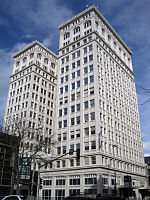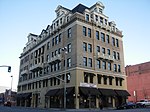Spokane Hoopfest

Hoopfest is an annual outdoor 3-on-3 basketball tournament held in Downtown Spokane, Washington. It is the largest event of its kind in the world. In 2011 the event drew 27,876 players on 7,046 teams. It began in 1989 with 2,009 players on 512 teams, and has grown to over 6,700 participant teams. It is estimated that around 175,000 fans visited the event in both 2010 and 2011 (and likely for many years before, although estimates had not been observed for previous years), meaning that the total number of people at Hoopfest could be measured at around 200,000 including players, fans, and volunteers. This number nearly equals Spokane's 2010 Census population of 208,000.Hoopfest is not just a basketball event, as there is often live music being played in Riverfront Park, along with merchandisers and various food tents. A very wide range of players are allowed to play, as the only requirement is that players must be entering at least the third grade in the fall following Hoopfest. A few men in their seventies have participated in Hoopfest. Matching uniforms are very common among the male and female high school divisions, and some teams have taken it as far as to wear Halloween costumes.
Excerpt from the Wikipedia article Spokane Hoopfest (License: CC BY-SA 3.0, Authors, Images).Spokane Hoopfest
North Stevens Street, Spokane
Geographical coordinates (GPS) Address Nearby Places Show on map
Geographical coordinates (GPS)
| Latitude | Longitude |
|---|---|
| N 47.6614769 ° | E -117.4184936 ° |
Address
Riverfront Park Clock Tower
North Stevens Street
99201 Spokane
Washington, United States
Open on Google Maps









